6 min to read
While we’re all on the verge of facing the biggest economic crisis of all time, online sales have reached unprecedented levels of revenue. As a digital marketing agency we constantly track trends and clients sales.
Amazon emerged as one of the big winners of the COVID pandemic, announcing it had generated $75.4billion in revenue in the first three months of the year – that breaks down to be over $33m an hour. To put things into perspective, that’s a 50m, "Black Legend" Mangusta Yacht, every hour.
So, the question is how can you benefit from this selling machine? How can you sell more on Amazon? We can help.
With this post I will try to help you, providing some steps that you simply can’t ignore if you want to achieve success in your Amazon campaigns. I am going to focus specifically on Amazon PPC (Pay per click) model, and the end of the article come up with a few tips on other organic (non-paid) strategies. If you use Amazon to sell products, you would love these Amazon listing optimization tricks.
Selling on Amazon
All retailers selling on Amazon must prepare to amplify their campaigns and position themselves for unprecedented online competition.
If you’re already selling on Amazon, the conversion rate is the metric that you should be looking at right now. Use this to establish short term goals, fine tune strategies and assess the overall performance of your campaigns.
What is a conversion rate?
Generically conversion rate is the percentage of visitors to your website that complete a desired goal (a conversion) out of the total number of visitors. A high conversion rate is indicative of a successful marketing strategy and product optimization: it means people want what you're offering, and they're easily able to get it.
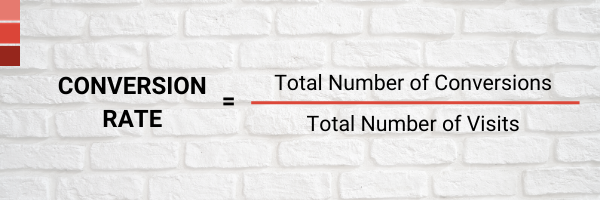
In Amazon specific terms, the conversion rate is the percentage of clicks that result in sales.
How do I know what my current conversion rate is?
To check this metric you have to login to your seller account, go to Reports and then Business Reports. You can find this information specifically on the sales and traffic report. it's also possible to check different conversion rates for each one of your products, and other detailed information lower down the page by ASIN.
Path: Seller central > Reports > Business Reports > Sales and Traffic (by Date / by ASIN)

Is my conversion rate good or bad?
Once we identify the conversion rate for each one of our products, we have to study it a little bit deeper to assess the quality. In order to do that, we have to understand the influence of each one of those products for our final revenue.
Valuating a conversion rate is not always as simple as looking at the number and calling it good or bad. Since Amazon is a marketplace, and therefore very product-focused, important to analyze conversion rates in within their unique product context.
Here are two frequent scenarios that demonstrate the situational assessment of a conversion rate:
- High conversion rates (10% or more) but low margin. This is often the case for cheaper, quick-to-click products that have a short customer journey. While these products might be top sellers, they may not be that valuable to the bottom line.
- Low conversion rate (below 3%) but high product margin. While this conversion rate may initially be considered as poor product performance, if that product generates an interesting revenue on the overall sales then we should consider it as a valuable part of our portfolio.
This means that the revenue coming from different conversion rates has to be interpreted according to its context, sector, vertical and the overall characteristics of the product compared to the direct competition.
Once all these variables are known, we can start to establish the main KPI’s for our advertising campaign on Amazon:
- Which product or category of products do we want to increase the conversion rate?
- Which conversion rates would be expected for each one of the products?
- How much should we invest to achieve those goals?
As you probably know, conversion rates are also correlated to the CPCs (cost per click) in paid campaigns. Higher conversion rates mean higher bids and lower conversion rates result in lower CPCs. As you drill down from ACOS and look at Conversion Rates, it becomes more clear where optimization can occur. Let’s dive deeper into the world of paid campaigns on Amazon.
What do I need to know before starting a campaign on Amazon?
Amazon ads, or Amazon advertising, is Amazon's online advertising program that centralizes all management for all its channels and media. As an Amazon digital agency, we use their solutions to promote our clients' products using search terms, display banners, charts and videos.
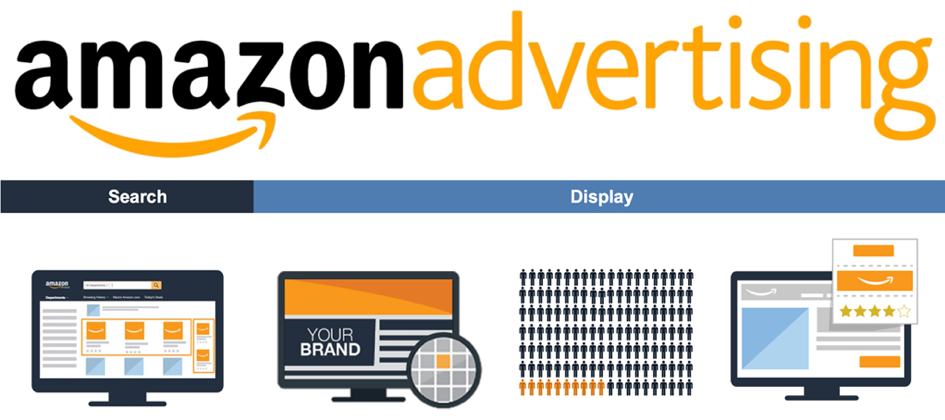
Why should I invest on Amazon PPC?
Amazon PPC campaigns are great way to start improving your conversion rate. Investing in Amazon's advertising placements not will get you more sales but will also increase the relevance of your products in the organic (non-paid) search results.
I you are already familiarized with Google ads, the campaign configuration and the ad structure it's very similar. Tactical features like match types or negative keywords are present in the Amazon ads platform.
Does it really pay off to invest in Amazon ads?
Like most digital marketing questions- the answer is yes, but only when done well.
To put this into context, average conversion rate on a regular e-commerce is around 1.3%, but with Amazon campaigns, you can see numbers closer to 9%. But conversion rate isn’t the only important KPI.
Conversion Rates and Cost Per Click fluctuate greatly, and mostly due to external factors like competition, demand, and the global socioeconomic context. As you can see in the following chart (Adbagder, 2019), last year's convergent peak was in November during Black Friday.
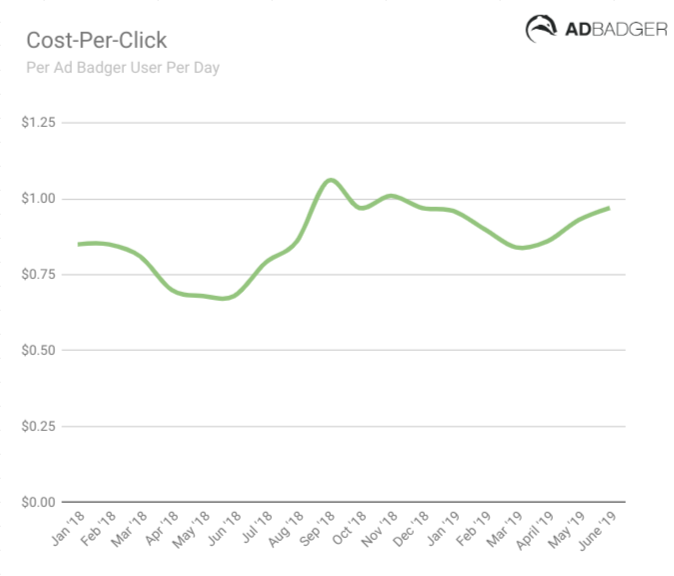 |
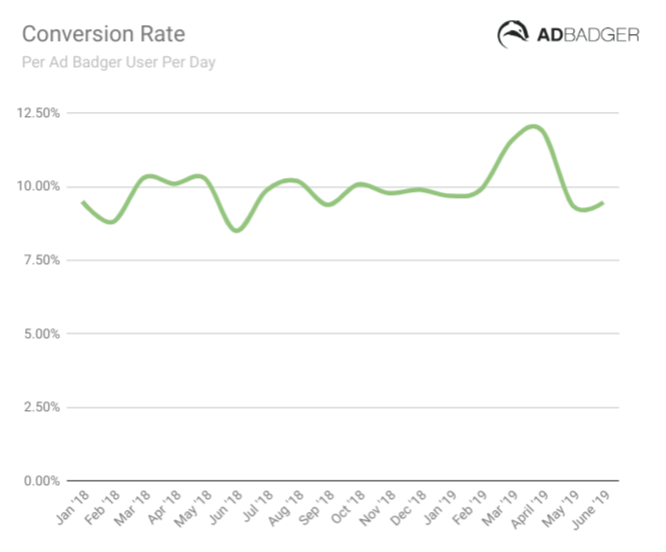 |
While we know that Amazon has already sold a lot this year, we can assume that due to the unpredictability of the COVID era, there has also been a lot of instability in conversion rates and CPCs. Therefore, the metric that we want to be analyzing to determine that profitability of our campaigns is not CPC or Conversion Rate, but ACoS.
OK, so what is ACoS?
ACoS or Advertising Cost of Sale is a metric used to measure the performance of an Amazon Sponsored Products campaigns. For instance, a campaign that generated $10,000 in sales, with an investment of $2000 has an ACoS of 20%. The lower the ACoS, more profitable the campaign is.
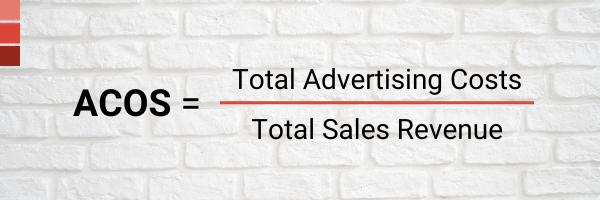
How can we minimize ACOS?
- You should be adjusting your bids daily. This is an unpredictable time, so you want to stay as agile and reactive to market shifts as possible.
- Focus on bottom of the funnel keywords and decrease the number of keywords used for prospecting
- Block unprofitable terms using negative keywords.
- Prioritize on what the data shows is working.
Any other recommendation as an Amazon digital agency?
As a digital marketeer we must always consider the conversion funnel and be aware that different consumers have different customer journeys. So, besides focusing on your paid campaign strategy, I would also add a few other ideas:
- Optimize for organic conversions. Make sure all your projects are correctly identified and have all the necessary description items as title, keywords and descriptions. Focus on these aspects to make sure that your product is unique and distinguishable from competition.
- Adjust your product prices and create new offers and promotions. On Amazon it's almost irrelevant to show up in the search results if you don't have competitive price. Take a deep dive into your own internal margins but keep an eye on competition. I would also recommend A/B testing using price is one of the factors for the test.
- Use alternative ways to sell on Amazon. Amazon's affiliate program it is a very clever way to balance organic and PPC strategies, and benefit from social media or retargeting. By using Amazon's affiliate program, you can reach consumers that are not directly searching on Amazon.
- Work on your reviews. Amazon algorithm is obsessed with comments and reviews from their clients. After every sale you should engage in an active follow up making sure let the consumer will leave a positive review.
I’ll leave you with one final note: There undoubtedly is potential on Amazon, but in this moment when the market is facing the highest levels of online competition ever, you should not start selling on Amazon without a consistent strategy behind you. When properly configured, Amazon can be a very powerful third-party sales channel, but common mistakes might lead to substantial losses.
We’ve been working with Amazon for several years now, and have helped increase our clients’ sales by up to 800%.
Do you want to know more about Amazon? Book an appointment with one of our Amazon experts, and I'm sure we will make your time worthwhile.
Next Steps
Codedesign is a digital marketing agency specializing in data-driven online sales and lead generation solutions for brands in a variety of verticals. Contact us to schedule a consultation with one of our digital marketing experts.



Add comment ×